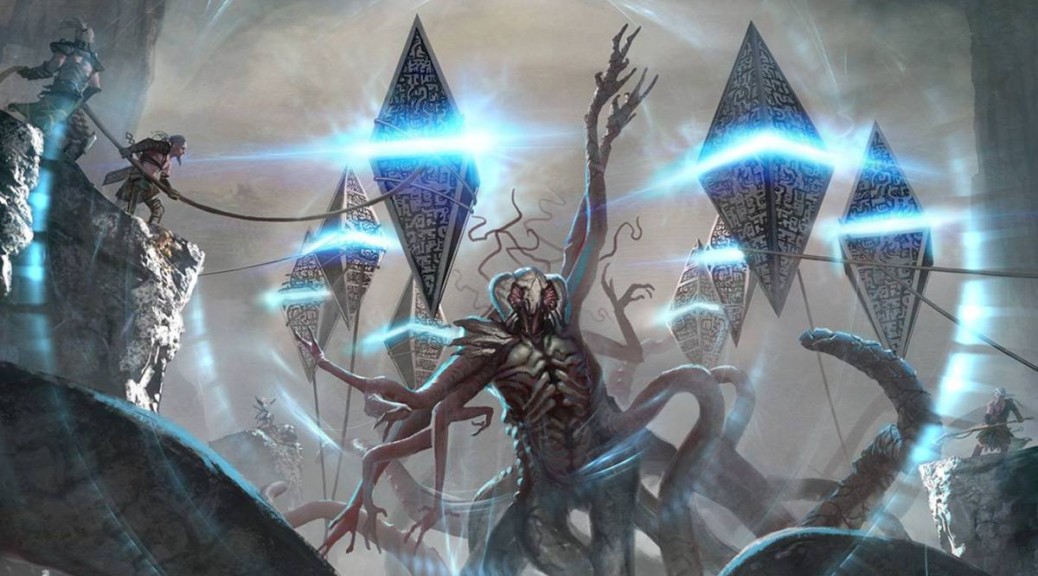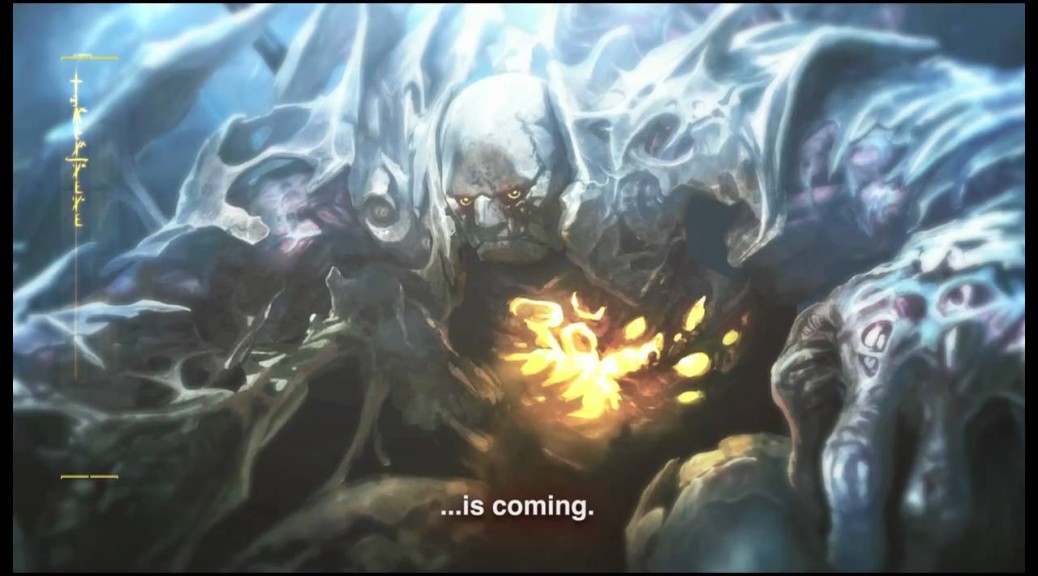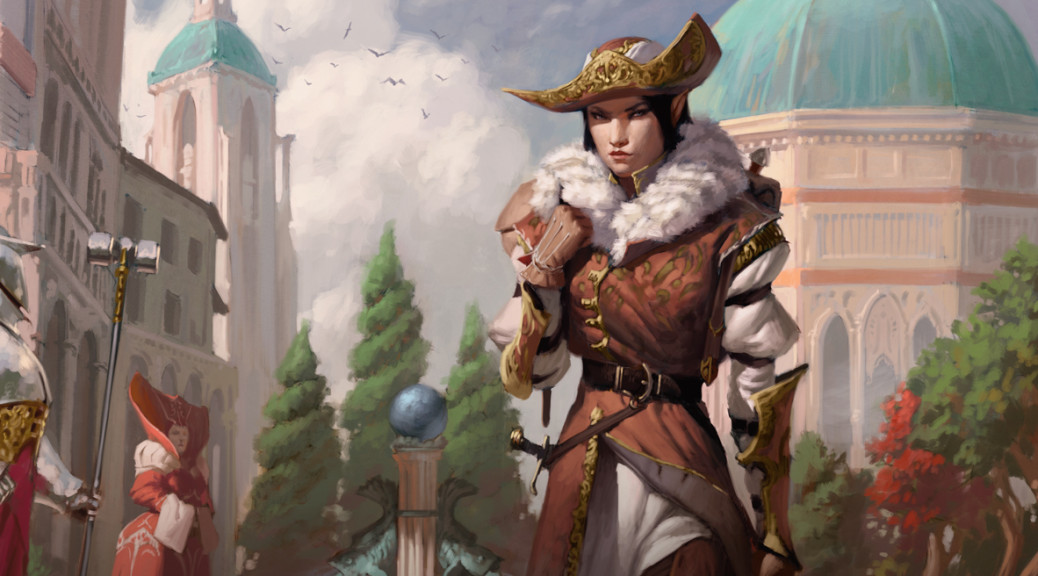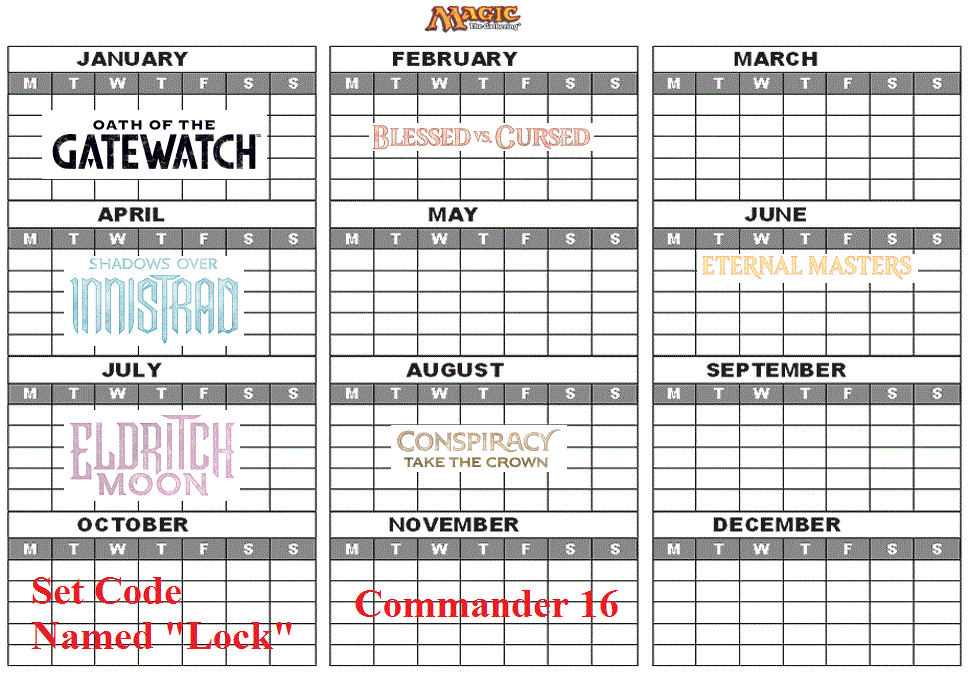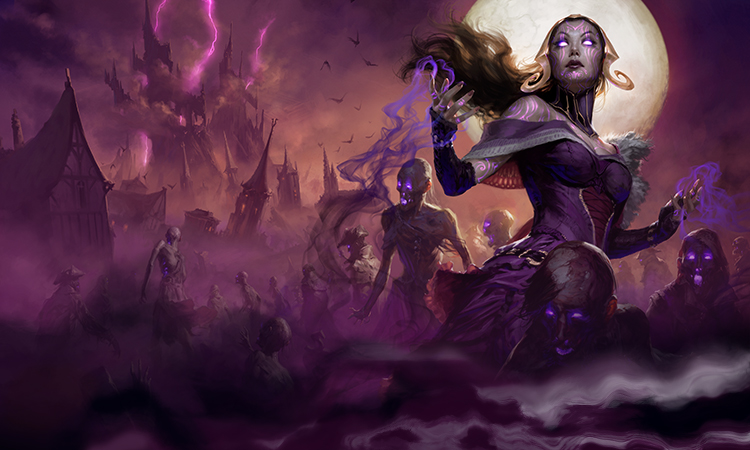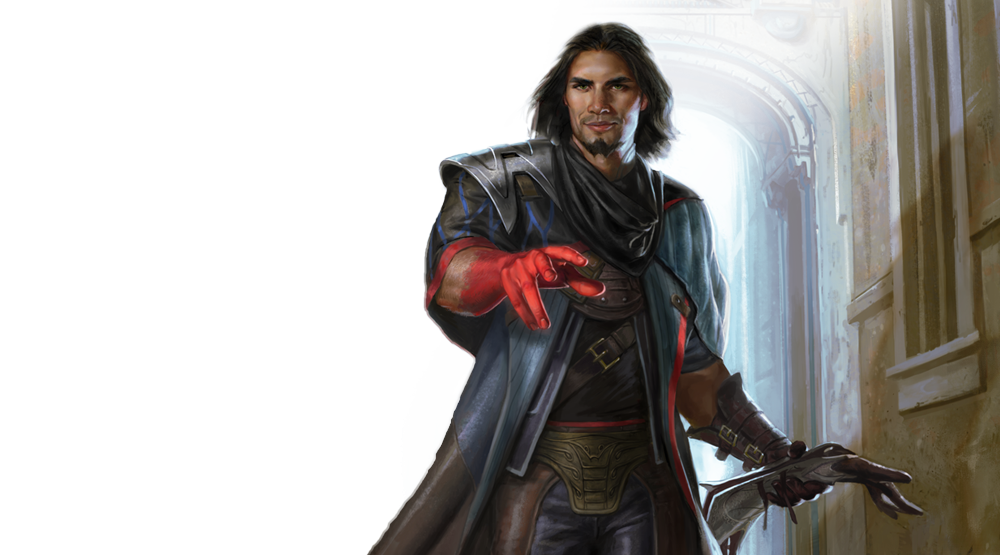Uncertainty can be a bitch.
Uncertainty makes people regress to their baser instincts and a lot of investment decisions are driven by fear. Don’t buy too late or you’ll miss out. Don’t sell too early or you’ll miss out. Buy a Powerball ticket, ever. If being calm and rational in the face of losing money – real or potential, were easy, everyone would be a cash money millionaire with dolla dolla bills, y’all, drinking cough syrup out of a bejewled chalice and going to jail for tax evasion. Cash may rule everything around you, but your amygdala rules you and it makes you kind of a pansy.
This is why the removal of uncertainty can serve as as much of an event as anything else in EDH Finance. We talked about the last EDH Rules Committee announcement because it gave us a lot of significant events – the changes to the color identity rule that helped us predict a huge spike in the price of cards like Sen Triplets. The banning of Prophet of Kruphix that helped us lose a lot of money on our copies of Prophet of Kruphix. Less blatantly, though, we saw a subtle indication that Prophet was more troublesome than a card like Consecrated Sphinx. The result?
The price went up by 45% in a week. Nothing gives prices a shot in the ass like a little certainty, and nothing says “safe for at least another 3 months, likely much longer” like using Consecrated Sphinx as an example contrasting with a card they did ban. It wasn’t designed to make the price on Sphinx go nuts, but everyone knew Sphinx was a card that people whined about and it was on all sorts of watch lists. It’s hard to spend $15 on a card that could be banned tomorrow. Well, good news – now it’s $25.
A little certainty, even very little certainty, is smashing some card prices.
Safe For a Year is Forever in Finance Years
Back before Commander 2015 was spoiled, I looked at each deck and tried to predict some cards that would be included in those decks and end up being the next Wurmcoil Engine – that is to say what would be the $15 +/- $3ish card that would get reprinted in a Commander sealed deck, lose some value but ultimately retain a lot of it because every copy opened would go straight in a deck rather than hitting the market. In the case of an older card we might see some value reduction just because copies of an Invasion card are much rarer than a Scars of Mirrodin card. Regardless of what the card did after the copies hit shelves, I expected Wizards to target quite a few cards in the same price sweet spot as Wurmcoil Engine and I got, with basically no clues other than what the Commanders did, quite a few right – namely Urza’s Incubator, Black Market and Phyrexian Arena.
That’s not the point – they were guesses and I’m not going to pretend I want a pat on the back when I guess right because I sure don’t want someone to give me a hard time when I guess wrong. It’s that kind of thing that has a lot of MTG Finance people only talking about cards after they go up so they’ll never be wrong. The point isn’t that we guessed correctly, the point is that the stuff was predictable. We nailed quite a few cards in a recent article merely by listing Reserved List cards that were playable in both Legacy and EDH.
The point is if we predicted it once, we can predict it again. And we can also predict what happens to the cards that aren’t in the Commander sealed product because that’s what I want to talk about today.
There sure is, Brian. There sure is.
I bring up the articles I wrote about cards we thought could be in Commander 2015 because Phyrexian Altar was a very good candidate. Its price at the time of the article? $15ish – right in the sweet spot to be the next Wurmcoil. I didn’t know anything except that it would be a good idea to go to the Magic wiki and see what they said the two color combinations did. Golgari seemed to like sacrificing stuff and when I saw what Mazirek and Meren did I felt like Phyrexian Altar was a very good candidate for a reprint. Phyrexian Altar was not reprinted.
Then, this happened.
The price basically doubled. Why? Well, since Phyrexian Altar looked like a very good candidate for reprinting in Commander 2015, it was a risky pickup at the time. But, psychologically, something funny happened when it wasn’t reprinted. The way Commander cards are reprinted is much more predictable, now. There was always the risk of a reprinting in the core set or in something like Modern Masters. With an annual Commander sealed set, reprints for Commander cards are all but relegated to that once-yearly product. With this predictability comes some stability.
With that stability comes confidence. When Phyrexian Altar wasn’t reprinted at the $15 price point, people who were on the fence pulled the trigger, just as they did with Consecrated Sphinx. Altar isn’t going to ever be banned and with it escaping reprinting in the Commander 2015 set, it was safe for at least another year. That made it relatively safe to scoop up the 20ish copies on TCG Player, trigger the 1 or 2 copies on sites like Card Shark and Strike Zone to be snapped up and basically pegged the new price at $30.
Suddenly a card that was risky as a $15 staple that made sense in sealed product was a less risky card that had another year to grow and had people’s confidence. The same reasons (great in Meren and Mazirek decks, for example) that made it an obvious choice for printing in those decks makes it a great pickup for people building those decks. Demand increases, confidence increases. The farther the price gets from $15, the more sense it makes to invest. The card is hot, it’s not getting reprinted for at least another year, and what are the odds they print a deck next year where it would slot in so perfectly? And if they’re trying to find a $15 Wurmcoil analog to jam some value in, are they going to print a $21 Phyrexian Altar in a product with $35 MSRP? What about a $25 Altar? What about a $30 altar? Suddenly the reprint risk is gone. Suddenly Phyrexian Altar looks very safe indeed. What better place to park $30?
$15 Commander staples that escape reprinting in sealed product and get better with the new set basically miss their reprint window. Altar is much tougher to reprint than it was a year ago and with the contents of Commander 2016 getting close to being finalized if they’re not already, what is Wizards to do? Jam Altar in FTV: Lore? Unlikely. Conspiracy 2? It would have to work with the set- it couldn’t just be jammed in there willy-nilly. Another Commander’s Arsenal? That is the opposite of helping. They’re backed into a corner, basically, and another EDH staple becomes unaffordable for the average EDH player. A functional reprint or slight upgrade is a more feasible option than putting a $30 card in a $35 product unless there is no value in the rest of the cards and that makes the deck weak relative to the other decks. They’re handcuffed.
As bad as it is for the game, it doesn’t hurt us to be able to identify a few cards that could be the next Phyrexian Altar since Phyrexian Altar wasn’t the next Wurmcoil Engine.
What are Our Criteria?
First of all, the card can’t be on the Reserved List. Don’t get me wrong – those cards are great targets and a lot of them are starting to go up. But that’s a separate article. Like, to the extent that I already wrote that article.
Second of all, they should be cheap enough that reprinting the cards in an upcoming Commander set makes sense and failing to reprint them will be seen as a mistake. How good Phyrexian Arena is in Daxos decks could have pushed arena up in price the way Serra’s Sanctum is climbing but it got the reprinting and the price is reasonable, now. Altar wasn’t so lucky.
Thirdly, it can’t make sense to reprint the cards anywhere else. We’re not looking at the same kind of pressure that was on Phyrexian Altar if the card makes a lot of sense as a reprint in Eternal Masters or Conspiracy. $30 isn’t too much for a reprinting in a set that doesn’t have a set MSRP the way Commander stuff does but rather tends to enforce the total price of the set around the price of a redemption set on MODO. Phyrexian Altar would be clunky to jam in Conspiracy 2 or Eternal Masters but Shardless Agent wouldn’t.
With that, I have a few cards I want to discuss.
In case you thought Phyrexian Altar was an isolated incident, think again. All things Phyrexian got a second look lately and Tower followed the same behavior. Tower was a reasonable inclusion in a Commander set at $15, synergizes well with the Golgari deck and escaped inclusion in Commander 2015. Tower is not on the Reserved List because they needed to make room for Argothian Wurm and Opal Archangel (Funny how no one complained a decade ago about the color-shifted printing of Argothian Wurm that circumvented the Reserved List) and renewed confidence in it as a spec on top of how good it is with the most-built new deck means it missed its reprint window. This price is going to be tough to reign in, and if people start playing Nic Fit, a deck that is pretty strong in Legacy and which can get away with fewer duals since you want more basics than normal, this could see even more upside due to the additional exposure. I feel like this effect is very real.
Candidates
This could be nearing its reprint window. This gets played in Ayli, the second-most-built deck and synergizes well with Felidar Sovereign which is much more affordable, now. I’m not sure what the themes of the Commander 2016 decks will be, but lifegain usually features and this could be $22-$25 soon if not reprinted and that will make it much harder to reprint later. This is much newer than Phyrexians Tower and Altar but this is also cheating in EDH since it’s a 1-mana Baneslayer. If this isn’t reprinted soon it probably never can be.
This is very recent to be in the spot it’s in, but price-wise, this is on the bubble, I feel. This is a shoo-in for Karador decks and Karador is still being built a ton, especially with the new goodies from, you guessed it, the Golgari Commander 2015 precon. This may be a little easier to reprint in the new Innistrad block but I don’t see that happening. The lore will likely progress, making it tougher to reprint a Legendary creature at a very specific point in his life than it is a card like Thoughtseize. I’d say this is still tricky to reprint and if people start buying more aggressively, it will become even tougher.
This was always a great pickup, but with the changes to Rule 4 governing the colors of mana a rock like this could produce, this got even more attention and it’s going to need a reprinting soon before its price gets too high to touch. There are way more Lanterns out there than Phyrexian Altars but this goes in way more decks. This could be the next Sol Ring – reprinted into powder every cycle to make it accessible so it can go in a ton of decks or this could be the next Sensei’s Divining Top.
Conclusion
I will revisit this topic in a few months. The examples I gave are strong ones, but they’re also based a bit on a false paradigm – I selected cards that are in decks being built the most now but new archetypes may emerge with the printing of Commander 2016 which will make us focus on different cards. The criteria won’t change but they will be easier to find. I’m not advocating buying up these cards but I am suggesting that we can predict something very similar to what happened with Phyrexian Altar. You don’t want to be the guy who didn’t pull the trigger at $15 now faced with the grim reality of having to pay twice that. We can predict these jumps very nicely and we’ll do so when we have more information.
Am I off-base with this new theory? If not, what should I name it? The Phyrexian Altar Effect? Something pithier? Wittier? Hit me up in the comments section, nerds. Until next week!
